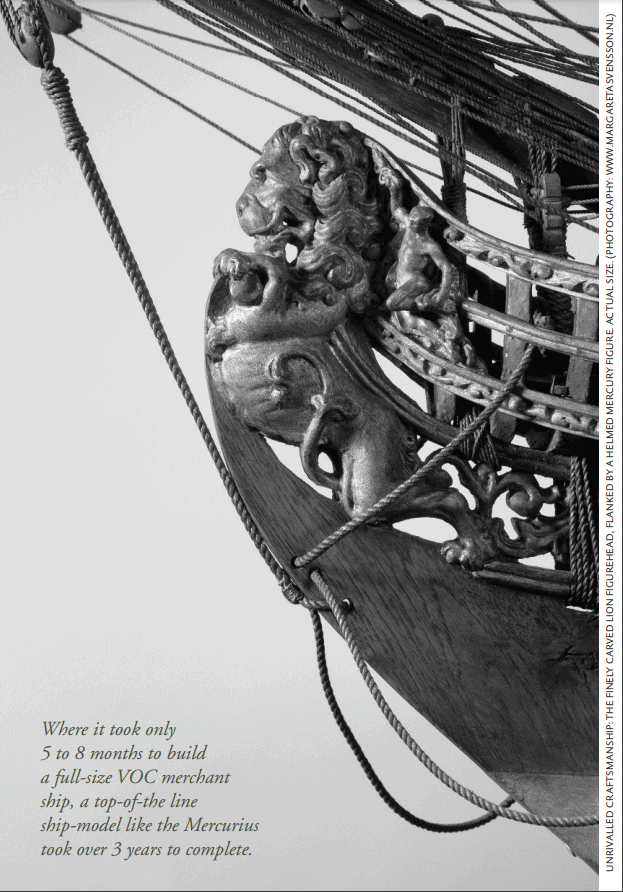
Built by Paulus van Zwijndregt (1681-1749) at the admiralty of Maaze dockyard, Rotterdam Overall measurements: 148 x 172 x 77.5 cm
The ‘Mercurius’ is thought to be the finest Dutch 18th century model still in private collection. The notorious shipwright Paulus van Zwijndregt, from an important dynasty of shipbuilders, went to great lengths to build his ideal ship. Years of craftsmanship were involved.
In its distinct quality, superb refinement and perfect condition, it can only be classified with a dozen other contemporary models which are all preserved in museum collections.
Scale 1 : 28,5. Built plank on frame, the three wales are painted black, between the top wales the upper deck which is pierced for 22 cannons. 10 guns are placed on the quarterdeck, another 4 are to be found on the forecastle. The hull is painted white under the waterline, green above the main rail. The model is very finely finished with many examples of refined craftsmanship; the trail-boards and head-rails are carved and painted gold, supporting a carved lion figurehead, in the head-rails at both sides flanked by a helmed Mercury figure, male-headed figure carved gillings at the rails’ base, all of the figures are painted gold. The transom and quarter galleries are richly carved and detailed in gold with mica-inlayed windows. A green banner carries the inscription ‘Mercurius anno 1747’. The decks are fully planked using handmade nails, and detailed with marked iron anchors, pin and fife rails, bell with belfry, railings, ladders, cannons rigged on carriages, hatch, compass, wheel, doors and windows on deck cabins and numerous other details. Three masts, the mizzen rigged with a lateen spanker spar, cross spars, tops and trees, standing and running rigging. Profesionally re-rigged in the mid-twenteeth century with handmade beaten ropes. All sails are hurled and there is a silk Dutch tricolour flying at stern, adorned with the VOC-A emblem of the Amsterdam VOC chamber. The States lion holding a sheaf of arrows on the flag flying from the main mast as well as a banner carrying the ensign of the admiralty. Displayed on a wood cradle. The hull measures 114 x 36 x 16 cm.
Provenance: Built by Paulus van Zwijndregt to be examined by Stadtholder William IV and the admiralty board, 1747, then on display in the Westelijke Raadskamer at the Admiraliteits- or Prinsenhof, Amsterdam; collection M.F. (Frits) Enthoven, Amsterdam; his sale, A. W. M. Mensing & fils, Frederik Muller & Cie, Amsterdam, 26 October 1932, lot XI (Ill. as XII); purchased by P. Brandt for Stichting G. Ribbius Peletier, Linschoten (fl. 1300,-); on loan to the Centraal Museum, Utrecht, 1940; sale Sotheby’s Mak van Waay, 28 October 1975, lot 271; private collection, Belgium
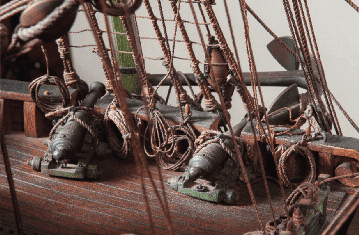
During the 18th century, Dutch shipbuilding was governed by a feud that came to be known as the ‘contoversy of the Amsterdam Englishmen’. Dissatisfaction with the quality of shipbuilding in the Admiralty Dockyards sparked a conflict within the upper echelons of the admiralty board. In 1727, with the greatest of secrecy, captain Hendrik Lijnslager commissioned the two English Master Shipwrights Charles Bentam and Thomas Davis to come to Amsterdam. At the intercession of Captain Cornelis Schrijver, the main advocate for the ‘Amsterdam Englishmen’, London shipwright John May was appointed head of the Amsterdam Admiralty Dockyard. This motion of no-confidence was taken up as an affront to the Dutch Masters. The Amsterdam shipbuilder and painter Adam Silo referred to it as a ‘heartless sacrilege to both the current Dutch masters as well as to the tradition of Dutch Shipbuilding
Sacriledge
Where was this ‘sacrilegious’ lack of confidence actually based upon? Anno 1689, in the wake of the Glorious Revolution, KingStadtholder William III decided to house the Dutch fleet within the British Navy. It suddenly appeared that in joint fleet operations Dutch ships lagged behind those of the British. This, of course, increased the prestige of British shipbuilding within the Dutch Republic’s Admiralty. Moreover, the average English ship lasted twice as long as a comparable Dutch vessel. And where London shipwrights were used to building ships according to mathematical principles, the Dutch shipbuilders swore by the more intuitive ‘Practice’.
In the summer of 1737, French spy Blaise Ollivier was able to distinguish three different methods of shipbuilding throughout the Netherlands. At the dockyards of the Admiralty Chambers of Zeeland, Friesland and the Noorderkwartier traditional Dutch methods were still being used. But in Amsterdam, due to the introduction of the ‘Amsterdam Englismen’, the English method was already being practized. Notably, an entirely new method had been introduced in Rotterdam by the shipbuilder Paulus van Zwijndregt. Van Zwijndregt was an incredibly tenacious man – the only man in fact, who in 1727 dared to raise his voice against the involvement of the Englishmen. It was this rivalry with the English that caused Van Zwijndregt to throw himself into his work, doing anything and everything in his power to convince the Admiralties of the superior-
ity of his own methods. While he did adapt some aspects of English innovation in his work, he remained fiercely opposed to the principle of building according to mathematical principles. Even so, Van Zwijndrecht has proven to be the most outstanding technical draughtsman of the period.
A trump card
The English, however, had a trick up their sleeve. Even the best of drawings couldn’t compete with the beautiful ship models that were used to seduce the Admiralty board. The tradition of the famous Navy Board models was initially a result of the business of shipbuilding in England. Unlike the situation in the Netherlands, in England building contracts would be outsourced to private shipyards. In order to convince commissioners, Master Shipwrights would manufacture scale models of their designs. In the Netherlands, this practice didn’t exist. Dutch ship models evolved out of a sacral tradition of building votive models as altarpieces for churches. This craft would later develop into the manufacturing of show models that graced the rooms of the Dutch East India Company (VOC) to inspire awe
The dedication required for building such pieces was immense. Assuming a real-size VOC return ship would take anywhere from five to eight months to complete, the construction of a model such as the Mercurius took over three years. In 1747 – the very same year that the Mercurius was completed – London Admiral George Anson commissioned the construction of the ‘Centurion’, a model of the ship that he sailed around the world. It was built at a price of 600 pounds sterling, which today would be equal to $120,000 !
In 1728, as response to the ‘Amsterdam Englishmen’, Van Zwijndregt presented a stunning model that he, grudgingly, had to have built in London because of the lack of skilled craftsman in the Netherlands at that time. This most ingenious model of a man-o’- war, which can be taken apart in three layers, is now considered to be one of the masterpieces in the Rijksmuseum’s Marinemodellenkamer.
The apex
The ‘controversy of the Amsterdam Englishmen’ reached its apex in 1747 with the instalment of Stadtholder William IV. As commander of the Admiralties he was aware of the necessity of standardization in shipbuilding. Until that time, individual Admiralties had maintained their own methods. From the three current methods in use by the VOC and Admiralty Dockyards, the best had to be chosen. For a shipwright the ultimate moment to advocate his vision. Additionally, this move towards standardization occurred simultaneously with the decade in which ship modelling was at its zenith. It was during the 1740s that the sophistication and realism of ship models had reached a point that has never since been equalled. From this period a mere dozen models of merchant ships do still remain
Paulus van Zwijndregt took up the complicated task of designing an ‘ideal ship’ that would unite efficiency in speed with a large cargo capacity. Therefore the ship could be used either as a VOC merchant ship, as a man-o’-war or even as a privateer. The design of the ‘Mercurius’ appears to be the culmination of Van Zwijndregt’s extensive experience as a shipwright. The head decoration, with its idiosyncratic side figures, is nearly identical to that of the Twickelo (1725), Van wijndregt’spremier ship for the Admiralty of Maaze. The slender bow characterizes the ‘Mercurius’ as a fast sailor. In 1747 the ship’s flat tuck could be taken for a provocation, as from 1742 the streamlined English-style stern had been introduced at the Admiralty’s and VOC dockyards.
Another distinguishing feature that bears the signature of Van Zwijndregt is the unusual length-to-beam ratio. With a length of 115 feet, the ship was smaller than the return ships the VOC standardly commissioned (130, 145 and 160 Amsterdam feet). But the extraordinary breadth of the vessel meant the ship could carry up to 500 tons (250 load). A ship very similar to the ‘Mercurius’ was put into service by the Rotterdam VOC Chamber. This ship, the ‘Ridderkerk’, made some successful journeys to Batavia with a crew of 60 to 116. It was far more economical to maintain than the 300 load ‘hekboten’ and flute ships which required double the personnel.
A testament of dutch shipbuilding
In the end the Stadtholder decided to appoint a committee of recommendation to decide the fate of Dutch shipbuilding. Unfortunately, it did not turn out in favour of Van Zwijndregt. Cornelis Schrijver, who was by that time Lieutenant-Admiral and still advocator of the English Master Shipwrights, was made head of the committee. No wonder the English method was soon declared superior to all alternatives.
What happened to the ‘Mercurius’ model? Most likely, because of its high aesthetic value and superior craftsmanship, the ‘Mercurius’ found its way into the chambers of the Amsterdam Prinsenhof, where the Admiralties held their meetings. In 1765, the noteworthy city chronicler Jan Wagenaar writes of an ‘alluring model of a 36-gun Warship’ in the west council room on the building’s second floor. Thus the ‘Mercurius’ graced the rooms of the Admiralty Board as final testament to the Dutch tradition of shipbuilding.
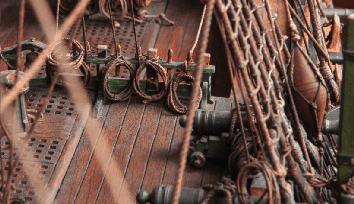
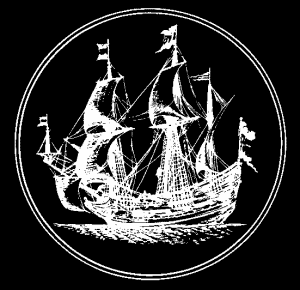

Rob Kattenburg BV
Eeuwigelaan 6
NL-1861 CM Bergen
The Netherlands
Tel +31 (0)72-5895051
[email protected]
www.robkattenburg.nl
By appointment only
"A Latin proverb listed by Wigardus van Winschoten in his well-known Seamen’s dictionary of 1681 proclaims ‘ex quovis ligno non fit Mercurius’. Literally it reads as ‘Mercury is not made out of any chance piece of wood’. Let that exactly be the sentiment I felt when I first got to see this outstanding model of the merchant fregate Mercurius back in 1975. By that time the model launched a sensation in the Dutch press, speaking highly of this ‘magnificent model’ made by a ‘masterhand’. It still remains the single top-of-theline model I came across in my 40 years as a specialist in Dutch old master marine paintings. In its excellent condition, a model like the Mercurius can be regarded as the most tangible testimony of Dutch sea-faring in its glory days, since none of the actual VOC-ships has survived the ages. Even more exciting if one imagines the model to be built by the very same hands as its life-size equivalents that dominated the world seas.”

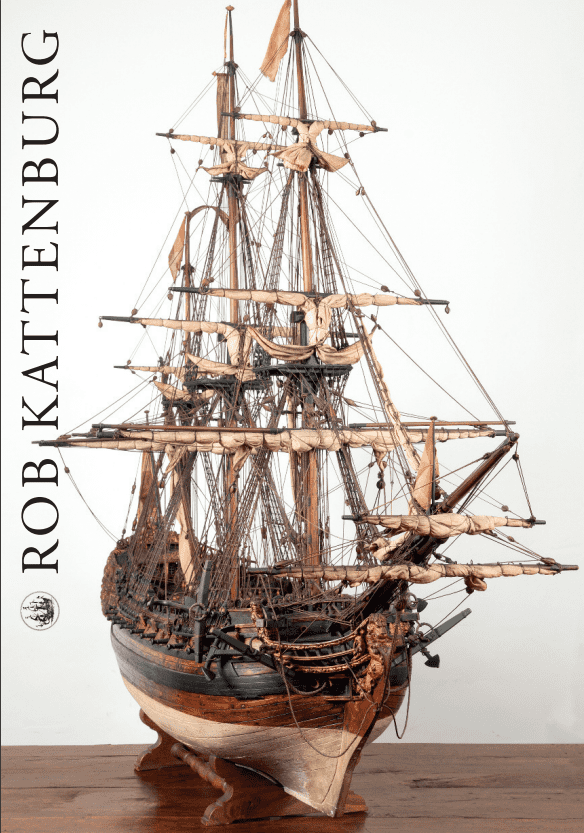
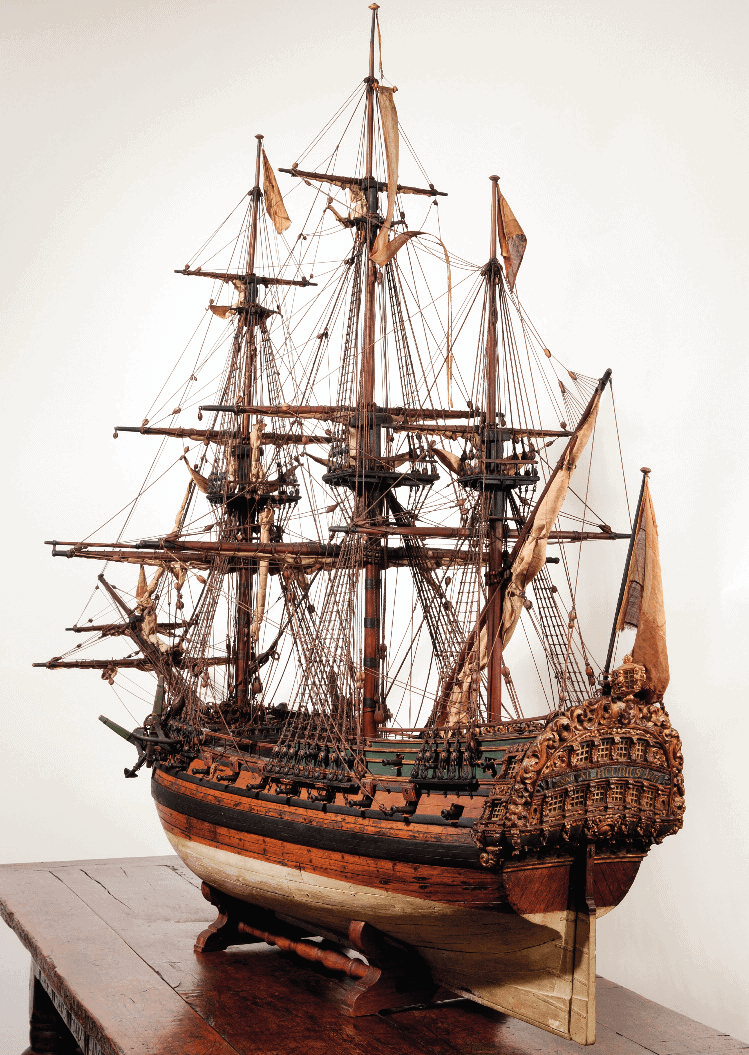
© 2022 Rob Kattenburg
Website Mediya.nl